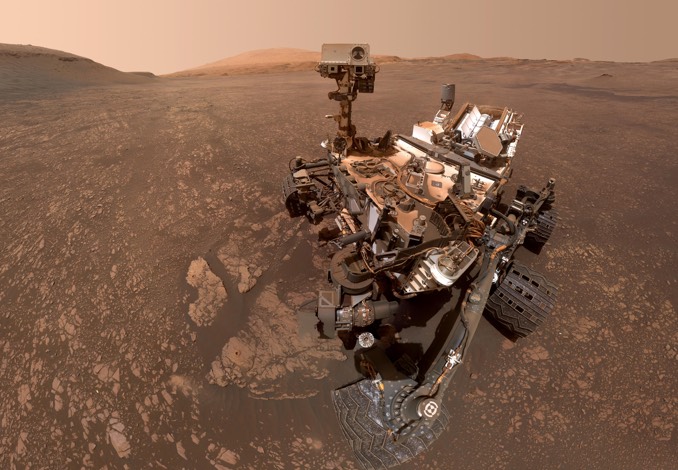
NASA’s Curiosity Mars rover has confirmed the presence of clay deposits on the slopes of Mount Sharp where orbiting spacecraft first detected their presence. Curiosity recently drilled and collected two samples from rock formations known as Aberlady and Kilmarie showing the highest amounts of clay minerals yet detected by the rover’s Chemistry and Mineralogy instrument, or CheMin.
Both drill targets are visible in a self portrait of Curiosity assembled from 57 images taken taken on 12 May, the rover’s 2,405th day, or sol, on Mars.
Clay often forms in the presence of water – a key ingredient for the evolution of life as it is known on Earth – and Curiosity’s latest findings add more evidence that a significant amount of water once pooled and flowed in Gale Crater. While the details remain a subject of debate, it’s likely that rocks in the area Curiosity is exploring originally formed as layers of mud in ancient lakes.
As Curiosity climbs higher up the slopes of Mount Sharp, it is expected to move into younger regions with geology reflecting an environmental change to a drier climate. How Mars transitioned from a warmer, wetter world into the cold, arid planet seen today is a major area of interest to planetary scientists.
So is the martian weather. Along with collecting soil samples for analysis, Curiosity used its black-and-white Navigation Cameras, or NAVCAMs, to photograph drifting clouds above Mount Sharp. The clouds are thought to be made up of water ice crystals at an altitude of about 30 kilometres (19 miles) above the surface.




